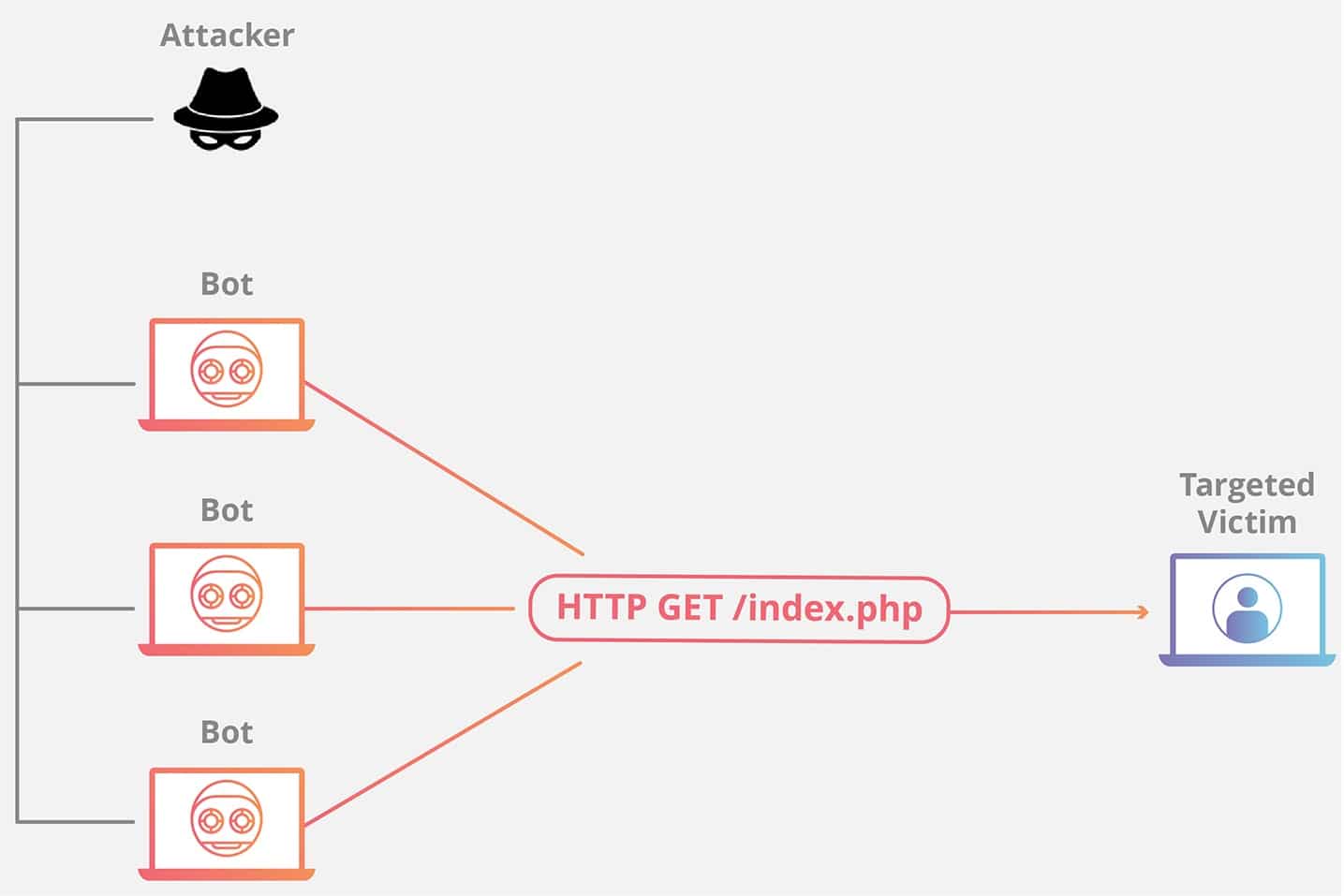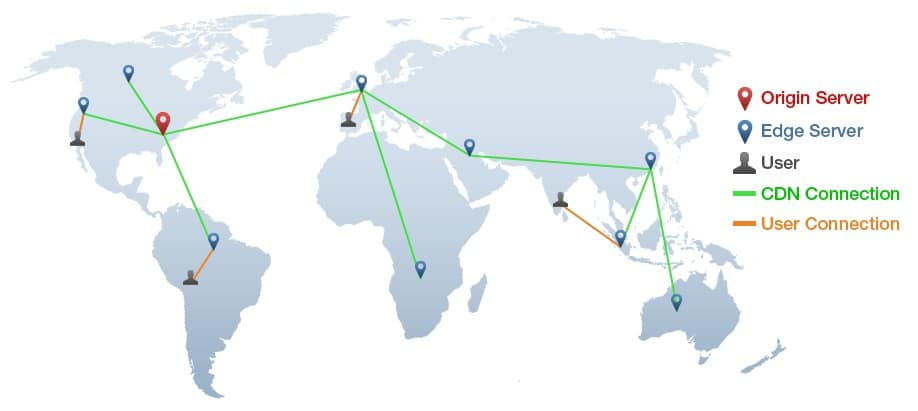How to Protect Your WordPress Site from DDoS Attacks
In 2021 alone, cybercriminals launched over 9.75 million DDoS attacks. Given the large percentage of websites that run WordPress, securing yours against potential DDoS threats should be a top priority.
WordPress is the most popular CMS platform in the world, powering over 43% of websites online. Since the CMS is free and easy to use, many individuals who run WordPress websites might not have comprehensive security.
Like how you must optimize your WordPress posts before hitting “publish,” your WordPress website needs some protection before opening to the public.
What is a DDoS Attack
A Distributed Denial-of-Service (DDoS) attack is one method malicious attackers use to target WordPress sites. The objective of these attacks is simple. Attackers will flood the target website with so many requests that it either crashes or becomes so slow as to be useless.
By doing so, attackers prevent legitimate visitors from accessing the website. It may also force the website owners to increase cybersecurity expenses for some period.
How a DDoS Attack Works

The objective of a DDoS attack is to overwhelm a target website. However, attacks originating from a single server are easy to block. Because of that, cybercriminals often use botnets. These are networks of compromised computers infected with malware that the attacker can control.
Using botnets also makes it more difficult for forensics teams to identify the source of the attack once investigations begin.
Potential Damage a DDoS Can Cause
When a DDoS attack strikes your WordPress website, it can cause much damage. The financial impact on non-business WordPress websites can be lesser but no less devastating. If a DDoS hits your website, you may simply lose access to your website for a short period.
Business websites are at far greater risk and can suffer a considerable loss. Here are some of the potential consequences;
- The immediate financial impact of a loss of sales
- High fees incurred for post-attack forensics
- Potential risk from data breaches
- Potential brand damage from negative customer opinion
And more.
The problem with DDoS attacks is that they can be challenging to mitigate. Regardless, there are several ways to improve the resiliency of your WordPress website against these attacks;
Protecting Your WordPress Website Against DDoS Attacks
-
Choose a Reliable Web Host
The first line of defense for any WordPress website is always the web hosting service provider. Many new users often focus on the basics of web hosting. That includes price, resources, type of plan, and what freebies they get.
Security is an essential but often overlooked aspect. Some web hosting providers partner with recognized security brands like Sucuri to better protect their networks. Others, like UltaHost, have dedicated VPS DDoS plans.
Don’t worry if this confuses you. Since WordPress is so popular, many hosts also offer Managed WordPress hosting options. These particular plans allow you to focus on building and running your WordPress site while the service provider handles the technical details like security.
-
Use a Content Delivery Network

A Content Delivery Network (CDN) is a collection of servers distributed worldwide that work together to deliver your website’s static assets quickly and reliably. The goal is to make sure your website loads fast.However, CDNs also bring extra security benefits of which you may not be aware. Thanks to the global server networks, websites can reduce the potential attack surface area by distributing loads. Essentially, you’re borrowing the CDN servers to increase your website traffic handling potential artificially.
Thanks to this feature, attackers will need to expend considerably more resources if they want their DDoS attack to succeed. If the attacker is determined, they can still overcome a website that uses a CDN.
While most CDNs require a paid subscription, Cloudflare offers a free plan that should work well for individuals and small businesses. Alternatively, some CDNs also have very affordable prices, like BunnyCDN.
-
Use a Web Application Firewall
Another security feature you can use is a Web Application Firewall (WAF). A WAF is a piece of software that sits between your website and the internet, protecting it from malicious users. It does this by filtering requests, checking for suspicious behavior, and stopping potentially dangerous traffic before it reaches your server.
You can use a WAF to do many things. Aside from protecting against DDoS attacks, they can block SQL or XSS injections, prevent brute-force login attempts on WordPress sites, and more. Many CDNs will include a WAF feature – sometimes free or at a small additional cost.
-
Disable XML-RPC Pingbacks
Disabling XML-RPC Pingbacks is essential to reduce the number of requests your site receives. This feature is what allows users to leave comments on your blog or website via a pingback. Unfortunately, it is also frequently abused by DDoS attackers.
To do this, go to Settings > Discussion, then click on “Disable pings and trackbacks.”
Once you’ve done that, scroll down until you see XML-RPC Pingbacks. Click on “Disable” next to it and save changes.
If there’s no option for disabling XML-RPC Pingbacks in your theme’s settings page or plugin panel (such as with WordPress itself), you can also consider using a security plugin. Good plugins to consider will include WordFence or Sucuri Security.
-
Update WordPress Regularly to Reduce Vulnerabilities
To help protect your website from DDoS attacks, you should keep WordPress and its plugins, themes, and security plugins up-to-date. Developers often review these applications to address shortcomings like security flaws – aside from introducing new features.
You can update WordPress manually or automatically by following these steps:
- Log in to your WordPress website account
- Click on Dashboard on the left navigation menu
- Select Updates
- Update the plugins shown on that screen
Many web hosts also offer customers the option to update WordPress automatically via the web hosting control panel. To learn more about this, talk to your web hosting provider.
Additionally, always be cautious about the plugins you choose to add to your WordPress website. Not all plugins are equal in quality. Some introduce nasty vulnerabilities or bugs, like locking you out of your WordPress admin dashboard.
-
Disable the REST API
WordPress comes with the REST API enabled by default. This feature is a potential vector for DDoS attacks because it allows external users to make requests to your server. Attackers can use this to overwhelm the site or cause it to crash.
However, the REST API isn’t necessary for WordPress to function or be secure or efficient. If disabled, you won’t lose any functionality that you currently have with your site—it will remain as it was before disabling the REST API.
The best way of disabling the WordPress REST API is by using a plugin like Perfmatters. Plugins like this will allow you to easily modify some settings with toggle buttons – No coding necessary.
Conclusion
WordPress is a great platform for content creation and management. But it’s not perfect and will not protect you from all security threats. You need to be proactive about protecting your site, which is why we recommend using a web application firewall or other similar services that can scan traffic coming in from outside sources.
Even if you disregard all other options, a good web host and reliable CDN are the bare minima necessary to protect your WordPress website from DDoS attacks.


